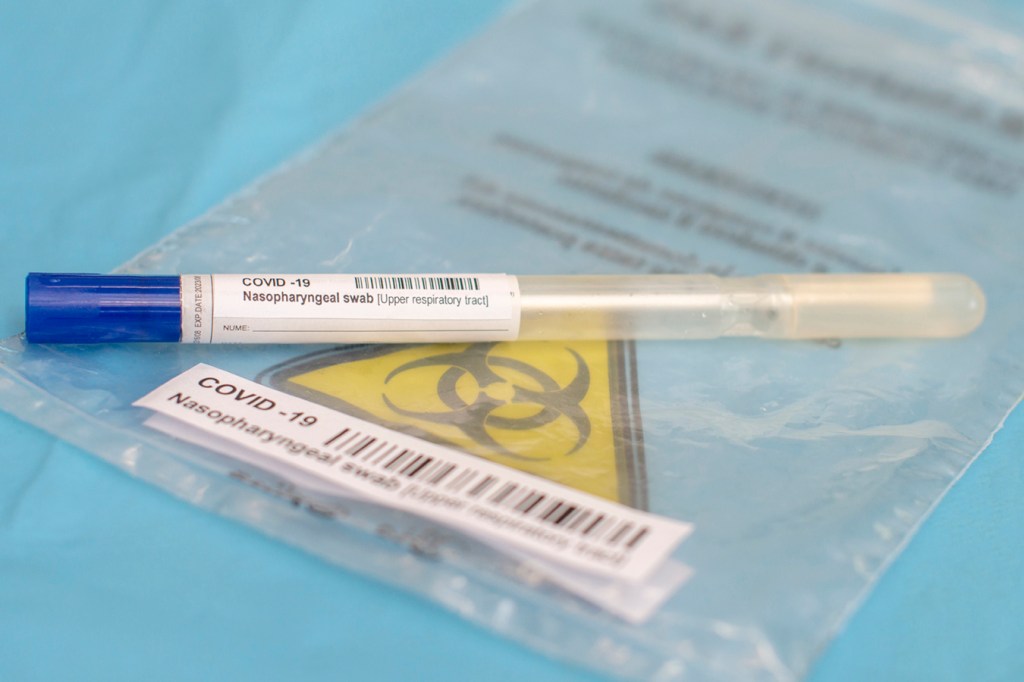Desperate to continue the tradition of a family beach week, I hatched a plan that would allow some mask- and sanitizer-enhanced semblance of normality.
We hadn’t seen my two 20-something children in months. They’d spent the lockdown in Brooklyn; one of them most likely had the disease in late March, before testing was widely available. My mother had died of COVID-19 in May.
So a few weeks ago, I rented a cute house on the Delaware shore. It had a screened-in front porch and a little cottage out back, in case someone needed to quarantine.
I asked my son, who had participated in several protests and had been at a small outdoor July Fourth gathering, to get tested before he came. Testing had been recommended by the governor and the mayor, and many centers were offering an anticipated 48-hour turnaround.
He got one and downloaded the app for results. And waited. And waited. And waited. For 12 days.
Coronavirus testing in the United States has been bungled in every way imaginable. The latest fiasco is perhaps the most Kafkaesque: Tests are now widely available in many places, but results are often taking so long to come back that it is more or less pointless to get tested.
If it takes up to two weeks to get results, we can’t detect brewing outbreaks and respond with targeted shutdowns. We can’t do meaningful contact tracing. We can’t expect people to stay home from work or school for two weeks while they wait for the result of a screen. We have no way to render early treatment and attention to those who test positive, to try to prevent serious illness. It’s a disaster.
Many doctors can do a rapid strep test in half an hour, and the “slow” test takes a day. Imagine if it took 12 days before doctors knew whether to prescribe an antibiotic. You’d end up with more cases of meningitis, pneumonia and rheumatic fever. Strep could spread through families and schools like wildfire.
One canon of medical practice is that you order a test only if you can act on the result. And with a turnaround time of a week or two, you cannot. What we have now is often not testing — it’s testing theater.
For months the hue and cry was about testing not being more widely available. Even many sick people couldn’t get one. The first tests proved faulty. Then good ones were not distributed to the hot spots. Then there were not enough swabs, personal protective equipment or ingredients like reagents needed to administer the tests.
After all these missteps, the political pressure to provide widespread free testing was enormous. And with little help from the White House, many states turned somersaults and delivered. Voilà!
But there was far less pressure to make sure that labs receiving the swabs had the capacity to process all those collected specimens.
Now, in cities like New York and Washington and Los Angeles, there are dozens if not hundreds of clinics where anyone who wants a test can walk in and get the famous stick up your nose or some variant. Though the simple tests are by law “free” to patients, the clinics bill insurers (or the government) hefty fees — sometimes hundreds of dollars — for administering them. This gives clinics the incentive to throw open the doors and do as many tests as possible.
Some hospitals, clinics and cities that run the specimens themselves or outsource to an array of different labs can deliver results in a timely fashion. State labs in Texas, which is experiencing a major outbreak, say their turnaround time is two to three days. But many results take far longer.
LabCorp and Quest, the two biggest commercial labs, have both acknowledged sometimes long delays in processing the vastly increased volume of tests. Governors are furious. Gov. Jared Polis of Colorado said that the nine days it sometimes took to get a result from these companies rendered them “almost useless.”
A coronavirus test is not really a test if the result is too late to act on. So labs need to ramp up capacity, as they’ve vowed to do. More important, all those centers offering free testing need to take responsibility for delivering results within 48 or, maybe, 72 hours. That means contracting with labs that can guarantee turnaround.
“Anyone who wants a test can get one” is a nice-sounding political promise, but it’s not helping anyone. Sick people need to know if they’re sick with the coronavirus. Those who have been seriously exposed need to know if they got it. And others will need tests to be cleared for work, school or a family visit with vulnerable relatives.
This is how the coronavirus played out in my family’s vacation: While my son arrived on schedule, his test results did not. So he was consigned to the quarantine cottage. He wore a mask in the house and the car. We ate outdoors and he sat at the far end of a picnic table. We even squirted the ketchup on his burger for him, so that he wouldn’t have to touch the bottle. Each morning we checked the app, hoping for deliverance. It never came.
Finally, 12 days after my son’s last potential exposure at the Independence Day picnic, I agreed he could take off the mask. He had no symptoms and at that point he was most likely no longer contagious, either way. We hugged and enjoyed our last two days of vacation. Then he returned to New York.
The next morning, I got his text: “Test came back negative!”
This story was produced by Kaiser Health News, an editorially independent program of the Kaiser Family Foundation.
